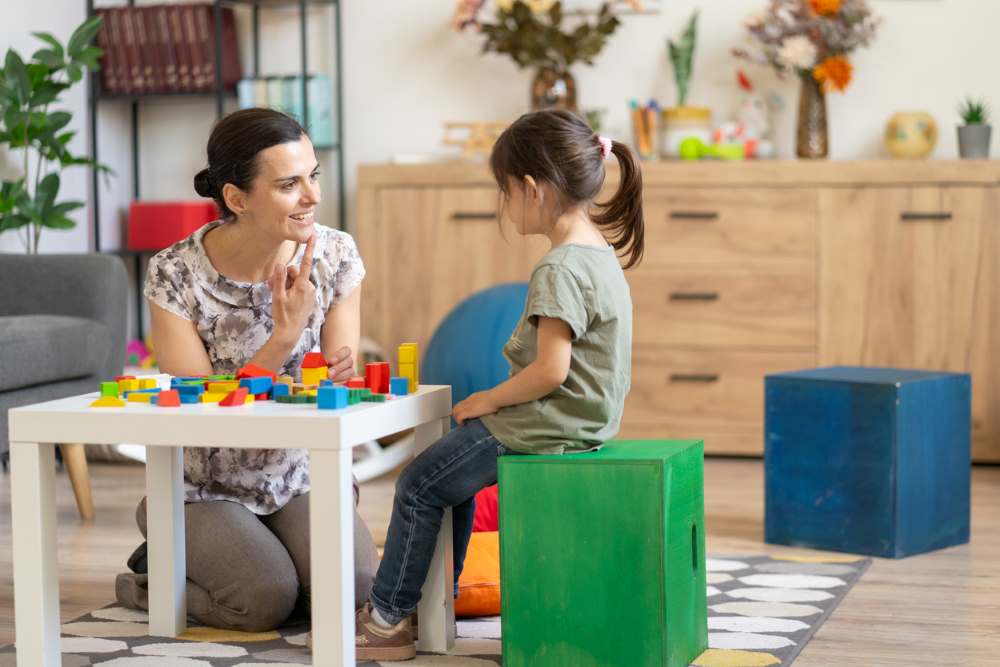
As a parent, you want what’s best for your child—especially when it comes to helping them overcome challenges, build essential skills, and feel confident in their daily life. If your child has been diagnosed with autism or another developmental condition, you’ve probably heard about ABA therapy, or Applied Behavior Analysis. But what exactly is ABA therapy, and how can it help your child? More importantly, how can you, as a parent, play a key role in supporting their growth and progress?
This guide is designed to give you a better understanding of ABA therapy and how it works. We’ll explore how ABA therapy builds skills, boosts confidence, and fosters connection—not just between your child and their therapist but also between you and your child. You’ll also learn how to effectively partner with ABA therapy services to create the best outcomes for your child.
What Is ABA Therapy?
Applied Behavior Analysis, or ABA therapy, is a well-established and research-based approach to understanding and improving behavior. It’s widely used to help children with autism, though it can be applied to various behavioral challenges faced by children with different developmental needs.
ABA therapy focuses on teaching specific skills by breaking them down into smaller, more manageable steps. These skills can range from basic self-care tasks like brushing teeth to more complex social behaviors like taking turns in conversations or managing emotions. ABA therapy is highly individualized, meaning each plan is tailored to meet your child’s unique needs.
One of the core principles of ABA therapy is reinforcement—rewarding positive behavior to encourage it to continue. This could be as simple as giving a child praise for completing a task, or using a favorite toy or activity as a reward for practicing new skills. Over time, the child learns that positive behaviors lead to positive outcomes, making them more likely to repeat those behaviors.
How ABA Therapy Builds Skills
ABA therapy is designed to help your child develop a wide range of skills that are essential for success in daily life. Here are some of the key areas where ABA therapy can make a big impact:
1. Communication Skills
One of the most important focuses of ABA therapy is improving communication. Many children with autism struggle with communication, whether it’s verbal, non-verbal, or understanding the communication of others. ABA therapy works to strengthen your child’s ability to express their needs, understand instructions, and engage in conversations.
For example, a child who has difficulty communicating verbally may be taught to use alternative methods, such as picture cards or simple gestures. The goal is to provide the child with the tools they need to communicate more effectively, reducing frustration and making interactions with others more enjoyable.
2. Social Skills
ABA therapy also focuses on improving social skills, which are essential for making friends, getting along with peers, and participating in group activities. Social skills training might involve teaching your child how to make eye contact, take turns during play, or recognize and respond to other people’s emotions.
These social skills are broken down into small steps and practiced repeatedly, making it easier for your child to understand and apply them in real-world situations. As your child’s social skills improve, they’ll begin to feel more confident in social settings, helping them form stronger connections with others.
3. Self-Care and Daily Living Skills
Self-care skills are critical for your child’s independence, and ABA therapy can help build these essential life skills. This might include learning how to dress themselves, brush their teeth, use the toilet, or follow a daily routine. By teaching these tasks step by step, ABA therapy helps children become more independent and self-reliant.
When children master these skills, they gain a sense of pride and accomplishment, which in turn boosts their confidence. They feel more capable of handling their day-to-day activities, and this success can encourage them to tackle new challenges.
4. Emotional Regulation
Managing emotions can be challenging for many children with autism. ABA therapy teaches children how to identify their emotions, understand what triggers them, and develop strategies for handling feelings in a healthy way. For example, a child who struggles with anger or frustration might be taught to use deep breathing exercises or ask for a break when they feel overwhelmed.
By learning how to regulate their emotions, children experience fewer meltdowns and can better handle stress, leading to a calmer, more balanced life. This also helps improve their relationships with family members, peers, and teachers.
The Importance of Confidence in ABA Therapy
Confidence plays a significant role in your child’s progress. When your child feels confident in their abilities, they’re more likely to engage in new activities, take risks, and try again after setbacks. ABA therapy helps build this confidence by focusing on small, achievable goals. As your child masters each step, they experience success, which boosts their self-esteem.
For example, if your child is working on a communication goal, they might start with something simple, like making eye contact when asking for help. As they succeed in this task, their therapist will introduce more complex communication goals, building on their success and strengthening their confidence along the way.
This gradual approach ensures that your child isn’t overwhelmed by large tasks but instead gains confidence step by step. With each success, they feel more capable of handling the next challenge.
Fostering Connection Through ABA Therapy
ABA therapy isn’t just about improving behavior or teaching skills—it’s also about building deeper connections between your child and the people around them, including you. As a parent, you play a crucial role in your child’s ABA therapy journey, and your involvement can strengthen the bond between you and your child.
How Parents Can Support ABA Therapy
ABA therapy services often involve parents as active participants in the process. Your child’s therapist may provide you with strategies to reinforce the skills being taught in therapy. This might include practicing communication exercises at home, using positive reinforcement to encourage desired behaviors, or helping your child work on self-care tasks during daily routines.
By incorporating these strategies into your daily life, you can help reinforce the progress your child is making in therapy. This not only speeds up their learning but also gives you an opportunity to connect with your child on a deeper level.
For example, if your child is working on improving social skills, you might practice taking turns during a game of catch or role-play a conversation with them at the dinner table. These small moments of practice become opportunities for bonding and connection.
Communicating with Your Child’s ABA Therapist
Building a strong connection with your child’s ABA therapist is essential for success. Open communication ensures that you’re both on the same page when it comes to your child’s goals and progress. Don’t hesitate to ask questions, share your observations, or express any concerns you might have.
If something isn’t working well for your child, or if you notice changes in their behavior at home, sharing this information with your child’s therapist can help them adjust the therapy plan accordingly. Collaboration between parents and therapists helps create a consistent and supportive environment for your child, both during therapy sessions and at home.
Celebrating Progress
ABA therapy can be a long process, but celebrating your child’s progress—no matter how small—is incredibly important. Each milestone, whether it’s learning to communicate a need, mastering a self-care task, or successfully navigating a social interaction, is a victory that deserves recognition.
Take the time to celebrate your child’s achievements, both during therapy and at home. Praise them for their efforts, reward them with extra playtime or a favorite activity, and let them know how proud you are of their hard work. These celebrations help motivate your child to keep going and reinforce the idea that progress, no matter how gradual, is worth celebrating.
Conclusion
ABA therapy is a powerful tool for helping children with autism and other developmental challenges build essential skills, gain confidence, and foster meaningful connections. By focusing on communication, social skills, self-care, and emotional regulation, ABA therapy services help children thrive in their everyday lives.
As a parent, your role in this process is critical. By actively participating in your child’s therapy, supporting their progress at home, and celebrating their successes, you help create a positive and nurturing environment that encourages growth and strengthens your bond with your child.
With the right combination of expert guidance and parental involvement, ABA therapy can open the door to a brighter future for your child—one filled with confidence, connection, and endless possibilities.



























